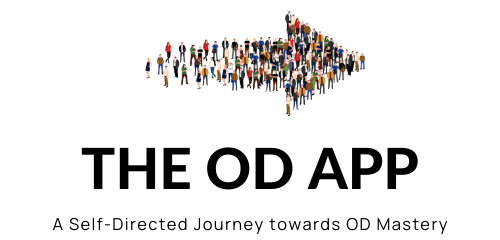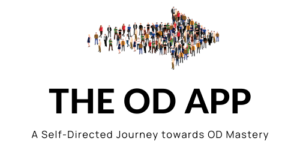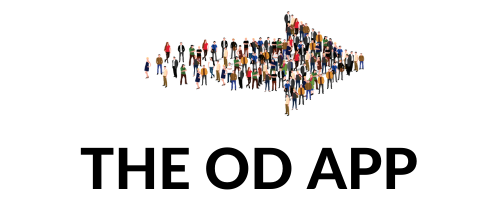Description
An OD practitioner who is a competent human system navigator is acutely aware of the deeply entangled and interacting elements that weave through and comprise all human enterprises. Discerning the patterns that emerge through those dynamic layers of interaction, the practitioner strategically adapts and responds, ensuring that their OD work is fit for purpose, serving the needs of their client.
(Ludwig Von Bertalanffy) first articulated the principles of general system theory in 1950. Katz and Kahn were the first to apply open systems theory to organisations in 1966. According to French and Bell, system theory is one of the most powerful conceptual tools available for understanding the dynamics of organisations and organisation change because every organisation is an open system—constantly interacting with its environment, influencing and being influenced, constantly adapting its internal functioning to that environment.
With respect to OD, the core insight of systems theory has been that every human system, at every level, is irreducibly complex, with the parts affecting other parts, the parts affecting the whole, and the whole likewise affecting the parts. Moreover, every ‘whole’ is itself a part of other wholes, with interdependent causal relationships woven throughout. Here are four useful definitions of what is meant by ‘system’ in the context of OD:
- System is a set of objects together with the relationships between the objects and between their attributes.
- System as a set of elements standing in interaction.
- An organised, unitary whole composed of two or more interdependent parts, components, or subsystems, and delineated by identifiable boundaries from its environmental suprasystem.
- A system is an arrangement of interrelated parts. The words ‘arrangement’ and ‘interrelated’ describe interdependent elements which form an entity.
Thus, when taking a system approach, one begins by identifying the individual parts and then seeks to understand the nature of the parts within the whole system and the quality of their collective interaction. A variety of systems sciences offer methodologies for mapping and explaining system behaviours. Examples include systems dynamics, cybernetics, soft systems, and human systems dynamics. Each approach has strengths and limitations, and all have valuable lessons for the OD practitioner.
Within this interconnected entanglement, small actions can have outsized effects and large initiatives can be absorbed by the system with hardly a ruffle. The system patterns are not linear, they do not behave like machines. Human systems can flip quickly and without warning from calm stability to chaotic resistance and vice versa. There are inevitably varieties of behavioural, cultural, and other patterns that form self-reinforcing and self-counteracting feedback loops that can support or hinder an OD intervention.
There is a causal openness to human systems, resulting in emergent properties which often are impossible to predict, diagnose or control. However, they can be observed and wisely navigated.
Like a sea captain adjusting their sails and fine-tuning their course as they pay attention to the patterns of weather and waves, it is vitally important that an OD practitioner be a competent human systems navigator, skilled at making sense of the patterns that emerge, fractal-like, in and through the interactions of the parts and the ‘wholes’ of a client system. Wisely and strategically adapting their actions relative to those patterns, the OD practitioner is able to ensure that their work is fit for purpose—whether equilibrium needs to be restored or disturbed, systemic alignment adjusted, or whatever might be needed in light of the emerging dynamics of the living system which is their client.
Experienced by clients
Practitioners who are competent systems thinkers are experienced by clients as holding a macro perspective of organizational change issues, able to discern how various parts interconnect and impact each other, and what may be their level of interdependencies. The breadth of their perspective instils confidence in their clients, as they demonstrate sensitivity to the whole and the parts of the organization and its context. The client can feel secure knowing that the practitioner will strategically adapt and respond to anticipated as well as unanticipated challenges and opportunities that emerge in any OD intervention. The client also experiences the power of seeing the larger whole(s), which then informs both the diagnostic and intervention initiatives. The “leaving no stone unturned” approach of the competent system navigator helps the client feel they are in safe hands as they journey through change.
What the competence ‘looks like’
The characteristics and qualities noted below are not intended to be exhaustive or definitive. Nor are they in any particular order. Nor are the distinctions between ‘Knowledge’, ‘Skills/Abilities’ and ‘Character/Attitude’ hard and fast—rather they are heuristic categories with obviously overlapping edges. The intention is merely to provide a frame of reference for considering important aspects of the System Navigation competence, especially as it relates to one’s own practice.



